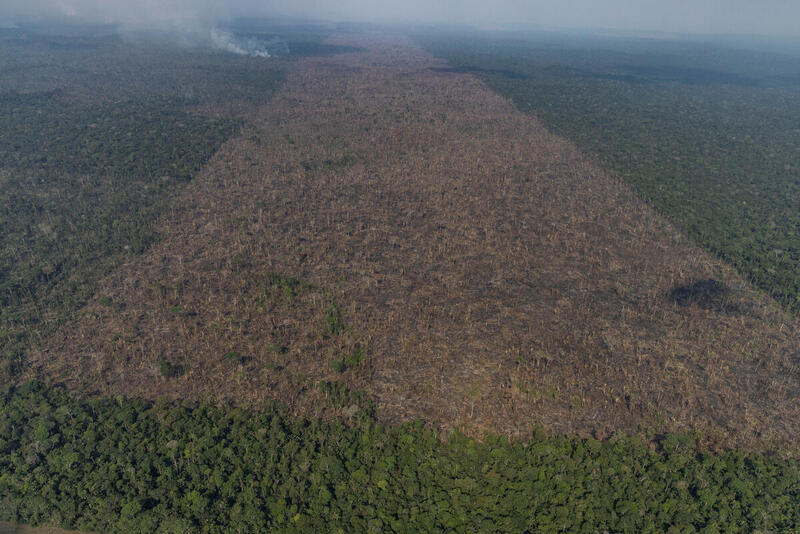Forest destruction reached 10,362 km² last year, the largest area since the beginning of Imazon’s monitoring

The Brazilian Amazon rainforest experienced its worst moment in the last 14 years in 2021. From January to December, 10,362 km² of native forest were destroyed according to the Brazilian research center Imazon, the largest area since the beginning of its satellite image monitoring, in 2008.
Just in relation to 2020, when 8,096 km² was deforested, the devastation in 2021 was 29% more. Despite the month of December has shown a 49% reduction in deforestation, from 276 km² in 2020 to 140 km² in 2021, the negative annual record is extremely serious in the face of the consequences of this destruction. Among them are: the change in the South America rainfall regime, the loss of biodiversity, the threat to the survival of indigenous and other peoples and communities that live in the Brazilian Amazon, and the intensification of global warming.
Nearly half of the destruction occurred in federal public forests
Crossing the deforested areas with the Brazilian Forest Service’s database (SFB, in Portuguese), the researchers observed that 4,915 km² were devastated within federal public forests. This area corresponds to 47% of all deforestation in the Brazilian Amazon last year. In these federal forests, destruction was the worst in 10 years. And related to 2020, deforestation increased by 21% in these areas.
Created to preserve biodiversity and maintain sustainable ways of life for peoples and communities that live in the forest, federal conservation units have also seen deforestation advance across their territories. In 2021, 507 km² of native forest were devastated within these protected areas, 10% more than in the previous year. In these territories, the devastation also reached the worst level of the decade.
“To combat deforestation, it is necessary to intensify inspections, especially in the most critical areas. Apply fines and embargo illegally deforested areas”, says Imazon’s researcher Larissa Amorim.
